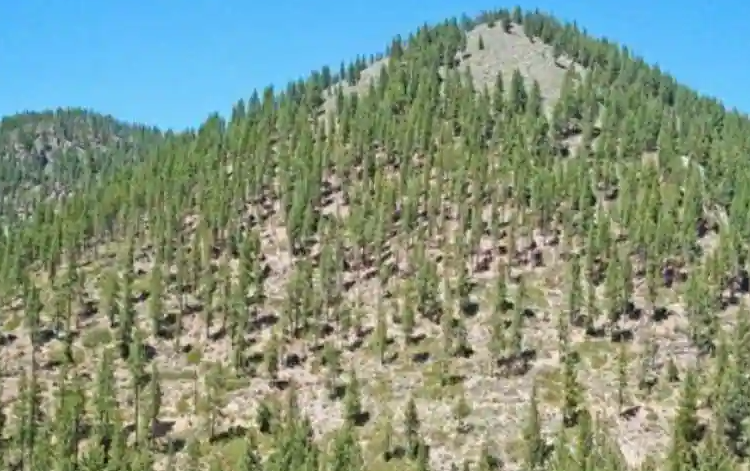Over-dependence on tree-planting to counterbalance fossil fuel byproducts could push food costs up 80% by 2050
Governments and organizations expecting to plant trees and reestablish timberlands to arrive at net-zero discharges should forcefully restrict such endeavors to abstain from driving up food costs in the creating scene, the cause Oxfam has cautioned.
Planting trees has been mooted as one of the vital methods of handling the environment emergency, however the measure of land required for such woods would be tremendous, and planting even a negligible portion of the space expected to balance worldwide ozone depleting substance outflows would infringe on the land required for yields to take care of a developing populace, as indicated by a report entitled Tightening the net: Net zero environment targets suggestions for land and food value.
Essentially 1.6bn hectares – a region multiple times the size of India, comparable to all the land currently cultivated in the world – would be needed to arrive at net zero for the planet by 2050 through tree-planting alone. While nobody is proposing planting trees to that degree, the report’s creators said it gave a thought of the size of planting required, and how restricted balancing ought to be if food value rises are to be kept away from.
Nafkote Dabi, environment strategy lead at Oxfam and co-creator of the report, clarified: “It is hard to tell how much land would be needed, as governments have not been straightforward about how they intend to meet their net-zero responsibilities. However, numerous nations and organizations are discussing afforestation and reforestation, and the primary inquiry is: the place where is this land going to come from?”
Food costs could ascend by 80% by 2050, as per a few evaluations, if balancing outflows through ranger service is over-utilized. About 350m hectares of land – a region generally the size of India – could be utilized for counterbalancing without upsetting agribusiness all throughout the planet, however taken together the designs for balancing from nations and organizations all throughout the planet could before long surpass this.
Dabi said: “As of now, a huge number of individuals all throughout the planet are going hungry. We need to counsel nations on how they will utilize their property, and nations and organizations need to decrease their emanations first [before depending on offsetting]. We additionally need to lessen outflows from farming, which is the second greatest wellspring of discharges worldwide.”
The report likewise tracked down that two of the most generally utilized balancing measures, reforestation and the planting of new timberlands, were among the most noticeably awful at putting food security in danger. Much better, as per the examination, were nature-put together arrangements that engaged with respect to timberland the board, agroforestry – the act of consolidating crop development or field with developing trees – just as field the executives and soil the board in croplands. These would permit individuals to utilize the land for food while sequestering carbon.
Dabi clarified: “We are not against afforestation and reforestation, and we would prefer not to stop individuals doing these things. Yet, they ought not be utilized at a huge scope and ought to be joined with different strategies, for example, agroforestry.”
She gave the case of Switzerland, which is wanting to balance about 12.5% of its discharges through carbon credits from projects in different nations, including Peru and Ghana. To arrive at that target would take a region the size of Costa Rica, Oxfam assessed.
A few organizations are likewise wanting to utilize carbon balancing dependent on trees and land as a component of their endeavors to arrive at net-zero outflows. Oxfam tracked down that a considerable lot of these plans, taken together, could add up to an over-utilization of land.
For example, four driving energy organizations would require a region twice the size of the UK for their counterbalancing. Shell would require about 28.6m hectares by 2050, as indicated by Oxfam’s evaluations, while TotalEnergies plans to balance about 7% of its outflows, requiring about 2.6m hectares by 2050. Eni, another energy organization, has plans for 8m hectares of ranger service, yet Oxfam computes that twofold this could be required. BP has not set out its arrangements exhaustively, yet is probably going to need as much as 22.5m hectares for counterbalancing as much as 15% of its discharges, Oxfam assessed.
Danny Sriskandarajah, CEO of Oxfam GB, called for organizations and governments to cut their emanations radically instead of depending on counterbalances. He said: “Such a large number of organizations and governments are taking cover behind the distraction of ‘net zero’ to proceed with grimy the same old thing exercises. A perfect representation of the doublethink we are seeing is the oil and gas area attempting to legitimize its continuous extraction of petroleum derivatives by promising unreasonable carbon evacuation plots that require silly measures of land.”
He added: “Net-zero targets are essential to handling environmental change. A few governments and organizations are making a strong move to cut emanations yet there are presently too not many to even consider allowing us a practical opportunity of turning away environment disaster and the inescapable appetite and annihilation that accompany it.”
A representative for BP said: “BP doesn’t plan to depend on balances to meet either our 2025 outflows decrease targets or 2030 points. Nonetheless, they might assist us with going past those points in the event that we can. We do uphold the utilization of carbon counterbalances or credits by organizations, nations and society to accomplish quicker and lower cost pathways to net-zero and assist with meeting the Paris objectives.”
Shell said it didn’t perceive Oxfam’s assessments. “Meeting a net-zero objective requires essentially changing the types of energy Shell supplies and afterward utilizing counterbalances at the edge to make up for any leftover discharges, ie we are changing the items that we sell,” said a representative.
“As Shell moves its portfolio to increasingly inexhaustible and low-carbon wellsprings of energy, it could well be that the emanations related with energy sold by Shell in 2050 is not exactly the amount of carbon credits we hope to have the option to supply our clients in 2030.”
Disclaimer: The views, suggestions, and opinions expressed here are the sole responsibility of the experts. No Unique Analyst journalist was involved in the writing and production of this article.

